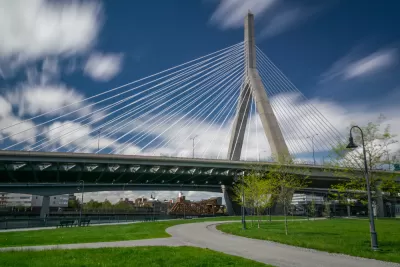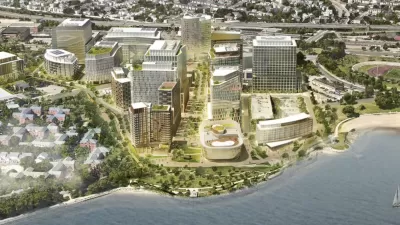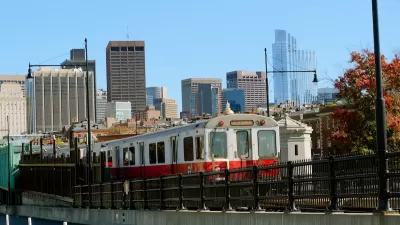Massive projects stayed a dream in 20th century Boston. Lessons from the failed ideas of the past inform a more complete understanding of the city in the 21st century.

Anthony Flint takes a tour of what might have been in Boston, where there's a uniquely long history of massive projects that never got built. Flint it mining history for lessons about what separates the never built from the transformative.
Lessons considered by Flint and sources: that Bostonians are easily spooked, or that Boston has constantly sought to expand outward (by making more land, literally) or upward (history is full of failed skyscraper ideas).
Five projects are particularly informative, according to Flint:
- Inner Belt, Southwest Expressway, and Northwest Expressway (1907-1971)
- Mission Control at Kendall Square (1961-1968)
- Completion of the Emerald Necklace (1897-present)
- City Hall Plaza improvements, restoration of Hanover Street, Congress Street pedestrian bridge (circa 1965-present)
- South Boston Megaplex; football and baseball stadiums (1990-2000)
Implied in some of the discussion with reference to specific projects is that some of these projects could still be built.
For more on the "never built" or "unbuilt" trope, see previous explorations from Los Angeles, Chicago, New York, and Seattle.
FULL STORY: Five plans that would’ve changed the face of Boston

Trump Administration Could Effectively End Housing Voucher Program
Federal officials are eyeing major cuts to the Section 8 program that helps millions of low-income households pay rent.

Planetizen Federal Action Tracker
A weekly monitor of how Trump’s orders and actions are impacting planners and planning in America.

Ken Jennings Launches Transit Web Series
The Jeopardy champ wants you to ride public transit.

California Invests Additional $5M in Electric School Buses
The state wants to electrify all of its school bus fleets by 2035.

Austin Launches $2M Homelessness Prevention Fund
A new grant program from the city’s Homeless Strategy Office will fund rental assistance and supportive services.

Alabama School Forestry Initiative Brings Trees to Schoolyards
Trees can improve physical and mental health for students and commnity members.
Urban Design for Planners 1: Software Tools
This six-course series explores essential urban design concepts using open source software and equips planners with the tools they need to participate fully in the urban design process.
Planning for Universal Design
Learn the tools for implementing Universal Design in planning regulations.
Ada County Highway District
Clanton & Associates, Inc.
Jessamine County Fiscal Court
Institute for Housing and Urban Development Studies (IHS)
City of Grandview
Harvard GSD Executive Education
Toledo-Lucas County Plan Commissions
Salt Lake City
NYU Wagner Graduate School of Public Service





























